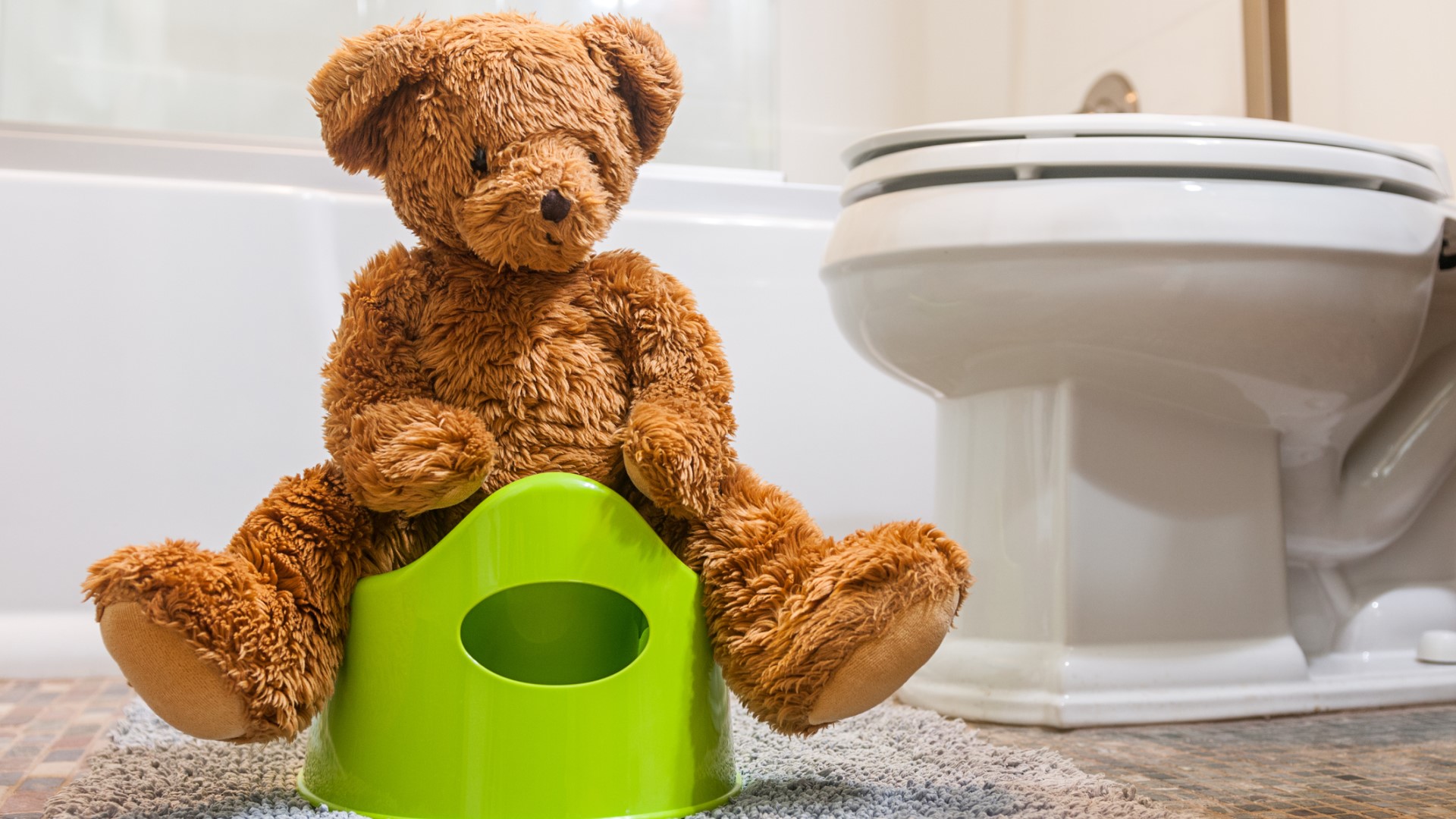
After being knee deep in nappies most parents will ask themselves when should potty training begin? There are two models that can be considered: a parent-oriented approach (examples are potty parties or dry in a weekend programs) and a child -led approach (following your child’s cues). The American Academy of Pediatrics most closely follows guidelines that favor a child-led approach. Overall, as a culture the average age for potty training has inched upwards over time. In the US, 98% of 36-month olds will have achieved daytime continence. On the other hand, nighttime bladder control is not expected until 5-7 years of age.
What to expect, more numbers than just one and two. It takes on average about 6 months to have consistent potty behaviors so prepare yourself for about 3 months of training with some expected accidents along the way. Starting at a younger age has been shown to increase the amount of time toilet training lasts. Females tend to toilet train 2-3 months faster than boys and first-borns tend to take longer than subsequent siblings.
Now let’s set the numbers aside and focus on development. Potty training is less about age and more about skill level, and you’re looking to train an Olympic level athlete so its takes some time! Your child should have motor skills to support walking to the potty and balance to sit and stand independently. In addition, your potty goer should be able to assist with pulling clothes up and down. To toilet train, children need to be able to follow a 2-step command (such as: go to the kitchen and bring me your cup) and have some language to tell you when they need to toilet. Some clues to these milestones are noticing an increase in dry intervals, your child is imitating you or bringing diapers to you and a sense of wanting to please you or be in-charge of their activities. When you see these clues to readiness a good next step is to model potty behaviors by having your child go the bathroom with you to get the scoop on poop (and pee).
Setting the stage. Potty training should be a fun performance and requires lots of praise, celebration and incentives! Decide on a script that you will adopt and have all training adults be consistent with using the same words, expressions, and routines. Having the child assist in choosing or decorating a potty chair or picking out toys or books to put in a potty basket in the bathroom allows some ownership and encourages a stress- free introduction. Make sure the potty chair is accessible and your child is dressed in loose easy to remove clothes. A period of get to know the potty chair such as sitting in clothes on the chair and reading books can help the child acclimate to the new “equipment” before they have to put it to work.
This get to know you period can last a week or two and then your child can transition to sitting on the potty unclothed. If you catch a potty accident offer praise and celebration while highlighting the connection of this is where the pee and poo go! Don’t expect lots of progress at this stage and avoid transitioning to training pants just yet. This stage of catching a go can last a week or two and once you see more consistent potty success that’s a cue to trial training pants. If you need to spend some more time in this stage that is OK too!
While you’re in this early practice stage encouraging your child to give you a warning or talk about toileting is helpful so that they understand how to communicate a need to go. Also, at this point you need to schedule frequent potty breaks and remember if you see the cues a grimace, a grunt, a gyration then expect the go to be coming fast- stop what you’re doing and get there double time!
The potty can be a new a scary place so avoiding flushing while your child is on the toilet can be helpful. Also having a low stress introduction to flushing such as sending some toilet paper flushes down without a potty attempt and waving Bye! Bye! to create confidence can be helpful. Boys can be trained sitting or standing for urine but it may help to start with sitting if aim is a concern. Once you move to standing floating a piece of cereal in the water and encouraging him to water the cereal can help with aim (and mess!).
Keeping the poo soft and regular is the biggest key to successful toileting. Your child should poop daily and it should be soft and easy to push out like mashed potato consistency. Your bladder is like an empty water balloon that fills during the day so if you move the big poo through it makes more room for the bladder to expand and makes holding pee easier. Constipation makes it hard to enjoy the go and is the biggest reason for potty failure. If it hurts to go your child will resist the go. Encouraging diets high in fruits, veggies, water and fiber can help with this. Two of the best fruits for number two are mango and kiwi but all fruits work.
Don’t forget to end the performance with some hand-washing for you and your toddler. Hygiene high-jinks such as a warm wash with bubble soap can be a fun shared reward.
If you or your child is struggling take two weeks off and try again. It all comes out OK in the end, enjoy the go!
Turner, T L, Matlock Ballard K (2021). Toliet Training. In M. M. Torchia (Ed.), UpToDate. Retrieved from https://www.uptodate.com/contents/toilet-training?search=potty%20training&source=search_result&selectedTitle=1~34&usage_type=default&display_rank=1
